
Forgotten style of traditional mariachi
As the fandango project of the son Jarocho was very successful, Los Cenzontles director Eugene Rodriguez felt eager to plant that approach to other Mexican regional music that represented the origins of Mexican Americans living in their community – namely people from Jalisco and Michoacan. began looking for someone to teach the group about the traditions of the long forgotten rural style of the traditional mariachi. All educational programs that arose in the the USA during past 50 years of mariachi revival promote the more recent tradition of the large mariachi orchestra playing an international repertory that arose in the 1930’s and 40’s from Mexican cinema. But traditional mariachi was a more improvised small string ensemble that accompanied dancers in local and regional rhythms.
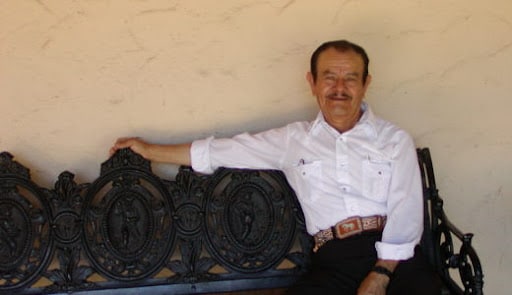
Don Julian Gonzalez
Eugene had thought it would be near impossible to find such a person since the enormous popularity of the mariachi orchestra eclipsed its own rural roots, becoming the ubiquitous international symbol of Mexico. Luckily Eugene learned of an elder living in the San Francisco Peninsula named Julian Gonzalez Saldaña who knew the old style.

Traditional Mariachi Clothing
At the time Los Cenzontles met Don Julian, born in 1935 in Southern Jalisco, he was working as a custodian in a food market. Don Julian lived his life mostly as a jinete or cowboy on the ranch of Camichines, municipality of Juchitlán, until his mid 40’s. His grandfather, uncles, and father played the old music and Julian was blessed with an extraordinary memory for the details for the style. The traditional mariachi repertory was rooted in the difficult life of hacienda workers. Musicians did not wear fancy urban charro outfits borrowed from gentry horsemen, but rather peasant manta, and played music on their time off from working hard in the cane fields. Julian spoke often of that life and the meaning of the lyrics that most urban mariachis do not know and never lived. His old renditions of well-known sones abajeños and traditional bowings on the violin did not fit modern mariachis so he was not often called for gigs with Bay Area mariachis. And while many of them expressed an interest in learning some old sones, they never took time to do so. In other words, the mariachi had outlived the essence of what the mariachi was.

Learning mariachi with Don Julian
Four members of Los Cenzontles began occasional visits to Don Julian’s small apartment in Belmont, CA to begin their studies. Eugene Rodriguez on vihuela, Tregar Otton on violin, Hugo Arroyo on guitarron, and Lucina Rodriguez, dancing. Julian presented the group a tiny handwritten piece of paper with the names of the sones abajeños that he could teach. This would be their guide list for the future creation of four albums.
Apprenticeship grant from the Alliance for California Traditional Arts
Los Cenzontles received an Apprenticeship grant from the Alliance for California Traditional Arts to work weekly with Julian. They learned the basics and nuances of the music son by son and instrument by instrument. It took a great deal of time for the group members to divest themselves from what they knew about mariachi to learn Julian’s style. The violin bowings, the vihuela strumming, the placement of the bass notes and the dance steps were all different than contemporary renditions. As a musico lirico, Julian learned and taught from his memory. And as he constantly worked to polish his recollection, he would often correct the versions from one session to the next.

Cuatro Maestros album
Among first sones abajeños that Los Cenzontles learned were El Pitayero, El Tesmo and Los Arrieros, the last of which was a version that only Julian knew. The group included those pieces on their 2001 Cuatro Maestros album.

Cuatro Maestros Tour
Cuatro Maestros was a statewide tour in the summer of 2001 produced by Los Cenzontles with support from the California Arts Council. It featured four regional styles of music represented by four elder masters, members of their groups when possible, and Los Cenzontles. Julian Gonzalez of Jalisco; Atilano Lopez Patricio of Indigenous Michoacan; Andres Vega and Mono Blanco of Veracruz; and Santiago Jimenez Jr. of San Antonio, Tx.

Los Cenzontles in Traditional Outfits
For the Cuatro Maestros tour Los Cenzontles performed with ranchero shirts purchased from Mexican cowboy stores. Lucina and her female dancers wore dresses created for them by France Do and Marie-Astrid Do-Rodriguez. They began creating outfits for the musicians as well based on Don Julian’s memory of the outfits worn by traditional mariachis of his youth.
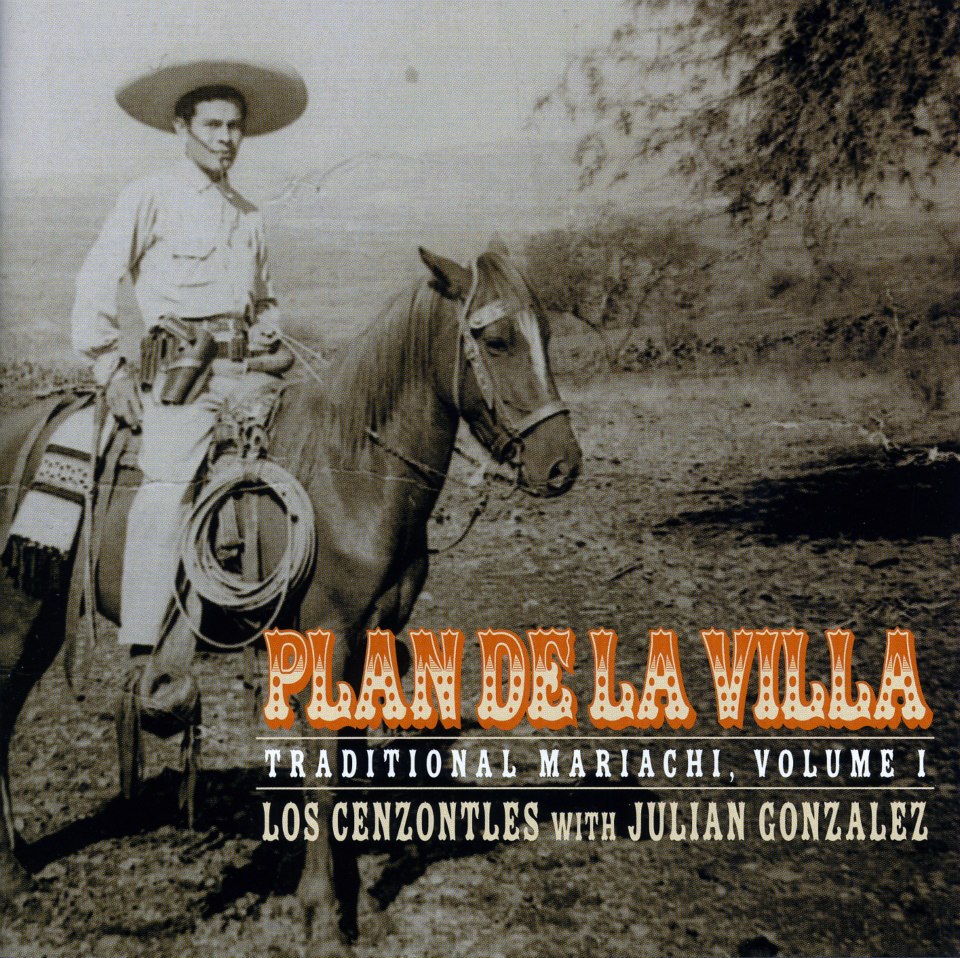
Plan de la Villa
Los Cenzontles and Julian Gonzalez released their first album of sones, Plan de la Villa. For the album cover, as well as subsequent albums, the group used old photos of a young Julian.

Performing grows
The group began to perform increasingly. In 2002, Los Cenzontles and Julian returned to Los Angeles to perform for a full house at the auditorium of the Getty Museum. Other performance venues around that time included the Scottish Rite Theater, Oakland, San Pablo Kermes produced by Los Cenzontles, Sacramento State University, and the Sacramento State Fair opening for Los Lobos.
Movement Danza
In the summer of 2002 Julian taught the students of Los Cenzontles to dance a traditional 12 movement danza, Danza de los Copetones, accompanied by the Los Cenzontles Traditional Mariachi, Danzas are reverential pieces that exist throughout Mexico Danza de los Copetones one was from his region. With France Do and Marie-Astrid Do-Rodriguez Julian directed the construction of the costumes.
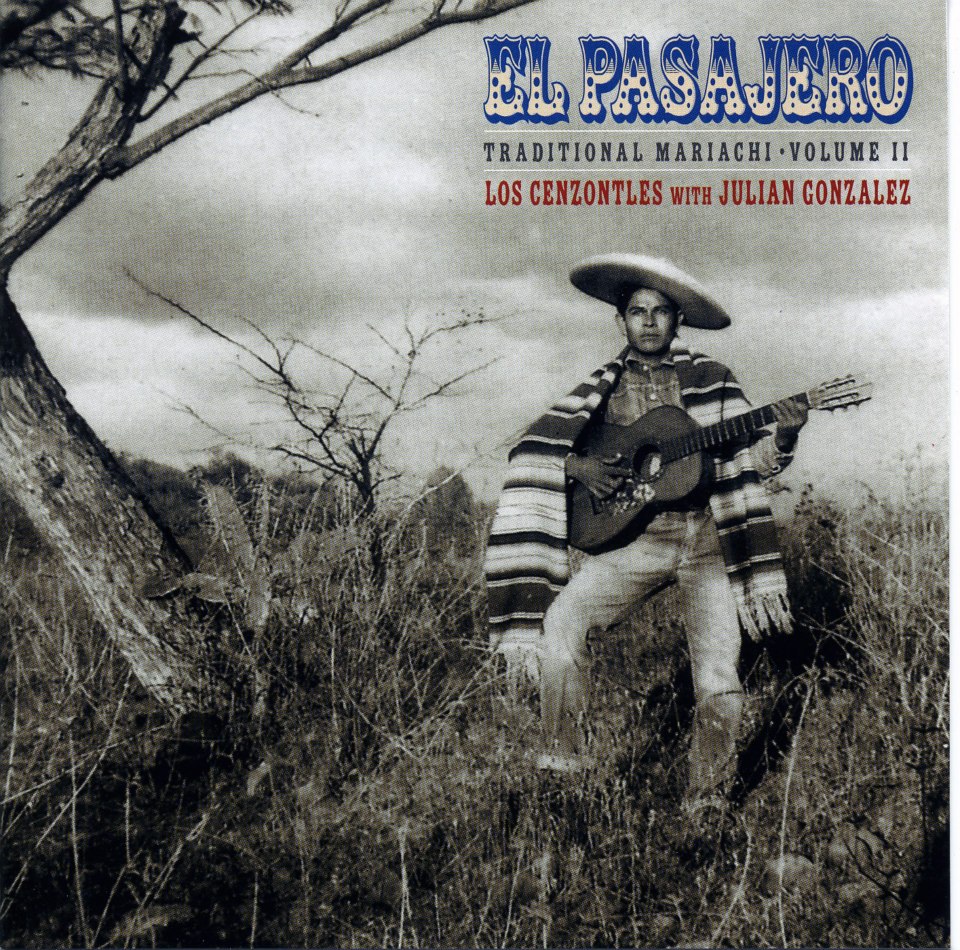
El Pasajero
The group continued to learn new sones from Julian and introduced some canciones rancheras and corridos as well. They also began to include the female vocal duet of Fabiola Trujillo and Lucina Rodriguez. Julian taught them the vocal phrasing of traditional songs. In 2002 the group released its second volume of sones and songs in El Pasajero, volume 2 album of traditional mariachi
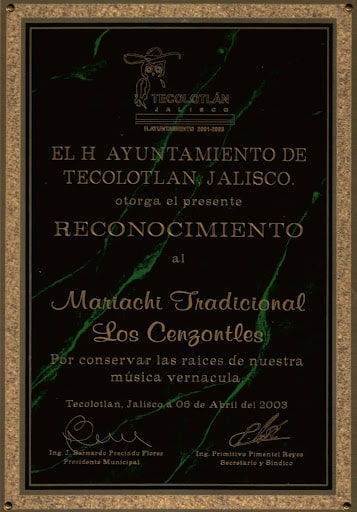
Returning Home
Los Cenzontles produced a groundbreaking homecoming tour for Don Julian of Jalisco and Nayarit to present the traditional mariachi. The tour was designed to provoke the memories of elders through the performances of forgotten traditions and incite curiosity of young people who did not know about the roots of Mexico’s most famous tradition. Los Cenzontles hired a bus and production crew to tour the state of Jalisco and perform in Guadalajara, and the pueblos of Tamazulita, Concepcion de Buenos Aires, Tapalpa, Tuxpan, Tecolotlan, Pihuamo, Zapotiltic, and Tepic, Nayarit. Los Cenzontles hired local groups to open each performance in the main plazas of each pueblo. The group was received officially by local leaders in each location and the public adored the shows.

Pasajero: A Journey of Time and Memory
The 10 day trip of returning home, funded by the US Mexico Fund for Culture, was featured in the film Pasajero, A Journey of Time and Memory. Director Ricardo Braojos accompanied by cameraman Oscar Carrillo filmed the tour and interviewed members of the public and elder musicians that the group encountered along the way.
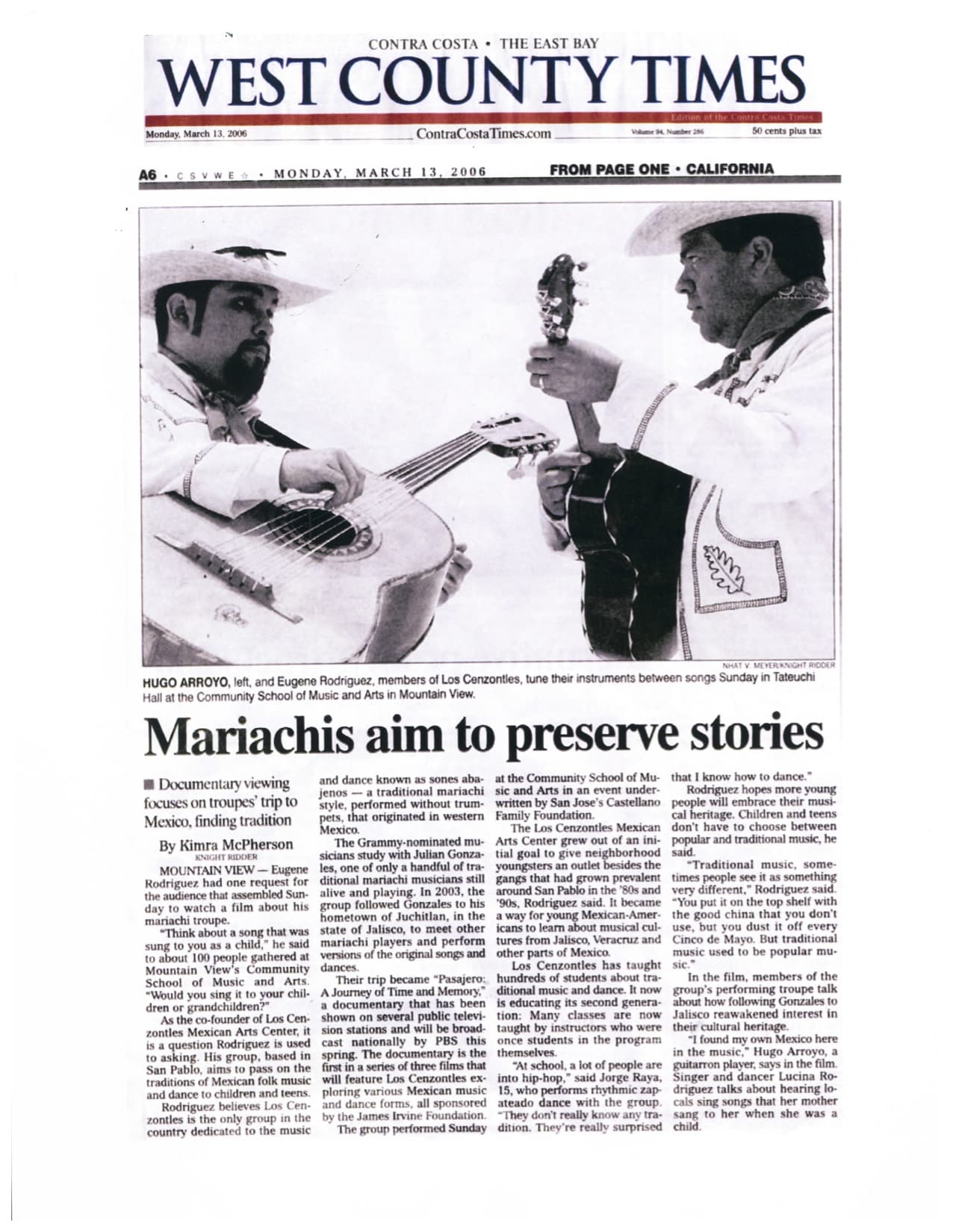
Mariachi Festival
the traditional mariachi of Los Cenzontles and Julian Gonzalez were featured at the San Jose Mariachi Festival. Additional concerts at that time occurred at Sacramento State University, Bakersfield, Visalia and the Chico World Music Festival.

El Chivo
The group releases the third volume of traditional sones abaneños, rancheras and corridos, El Chivo. Volume 3.

Performances by Los Cenzontles and Julian Gonzalez
From 2004 to 2008 Los Cenzontles and Julian Gonzalez performed at a variety of venues that include the Chicago Old Town School of Music, Chicago Children’s Museum, Colibri Gallery, Meztli Gallery, in Chicago, IL; National Association of Latino Arts and Culture conference, Kansas City, MO; the Carriage House, Villa Montalvo, Saratoga, CA; Grant Elementary School, Oakland, CA; Community Music Center, San Francisco, CA; Festival de Mariachi, Bakersfield College, Bakersfield, CA; Sonoma Plaza Fiesta, Sonoma, CA; Special Events Center, Boise State University, Idaho; Vacaville Performing Arts Theater, Vacaville, CA; Taylor Auditorium, University of Southern Missouri, Joplin, Missouri; Latino Arts Inc., Milwaukee, Wisconsin; Milwaukee Area Technical College; Hot House, Chicago, Il; Tama Hall, Hawkeye Community College, Waterloo, Iowa; the University of the Pacific, Stockton, CA; San Jose Mariachi Festival; San Jose Convention Center; San Jose Discovery Museum; Hogg Auditorium, the University of Texas at Austin; Winchester Theater, Las Vegas, NV; City of Henderson, NV; Ashkenaz Community Center, Berkeley, CA; Freight & Salvage, Berkeley, CA; Sonoma County Bluegrass Festival, Sebastopol, CA; Dia del Nino Concert, Mexican Heritage Plaza, San Jose, CA; the Pickleweed Community Center, San Rafael, CA; El Campanil Theater, Antioch, CA; West Side Theater, Newman, CA; Bishop Center, Aberdeen, WA; Dia de la Familia, Mexican Heritage Plaza, San Jose; Chico World Music Festival, Chico, CA; San Jose Mariachi Festival, San Jose, CA; Historic Ritz Theater, Brunswick, Georgia; Café Du Nord, San Francisco, CA; San Francisco Free Folk Festival, SF; The American Theater, Hampton, VA; Rialto Center for the Arts, Atlanta, GA; and the Atlanta History Center, Atlanta, GA.

El Toro Viejo
The group releases its fourth volume of sones abajeños, rancheras, and corridos in its El Toro Viejo, Traditional Mariachi Volume 4.
Para Don Julian
Los Cenzontles host a special commemoration for Julian Gonzalez for family and friends at LC Academy.

Collaboration with The Chieftans and Ry Cooder
Los Cenzontles and Julian Gonzalez were invited to appear on The Chieftains and Ry Cooder San Patricio album. San Francisco, CA.

Hardly Stricly Bluegrass Festival
Los Cenzontles and Julian Gonzalez appeared live with legendary Irish group The Chieftains at the Hardly Strictly Bluegrass Festival, San Francisco
Preserving Don Julian's musical legacy
Don Julian Gonzalez suffered a series of strokes that forced his retirement. He currently lives in his pueblo of Teocolotlan, Jalisco with his family. Los Cenzontles are forever grateful for all that he taught them about his traditions and the life that gave birth and supported those traditions. Every lyric sung in the old sones relate to the life of countryside and Don Julian knew the meaning of them all. He knew which way the bow was to be tied on the traditional jackets and what a tilted hat on either side of the head signified. He lived the life of the mariachi and that was translated into everything that he played. He shared that deep knowledge with Los Cenzontles and they in turn have dedicated themselves to teaching new generations to dance, sing and play the wonderful traditions of the son abajeño of the traditional mariachi.

El Pitayero - Los Cenzontles Juvenil
Teachers at Los Cenzontles pass on the rhythms of Mariachi Tradicional to younger generations. Los Cenzontles Juvenil records El Pitayero, following Don Julian's Legacy.

LA Plaza de Cultura y Artes
With great pride the traditional mariachi Los Cenzontles and Julian Gonzalez was featured in the Corazon de la Comunidad Mariachi Exhibit at the LA Plaza de Cultura y Artes in 2015-1016.
